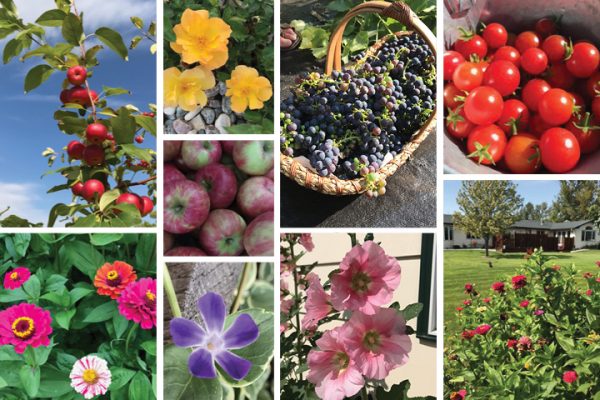 by Connie DeKrey, LBSW, CT
by Connie DeKrey, LBSW, CT
The role of expressive arts in helping individuals move through their journey of grief is an idea that has always excited me. I have witnessed so many examples not only in my work as a bereavement specialist, but also in my personal life.
While the concept of working through one’s pain using art, music, literature, and the like is actually age-old, it is affirming to note that current day researchers support the relevance of such activities as practical and intentional approaches to processing grief. Psychologist Tana Slay, PhD, in Houston, Texas, explains that various expressive arts can help open the pathways of emotional expression and gradually assist with moving one through grief in a healing way.
When we think of the expressive arts, music, art and writing come to mind. But creative expression can encompass a myriad of other areas, including woodworking, quilting, needlework, dance, gardening, cooking and exercise. The list is limitless.
As I pen this blog, I am able to look out my picture window and be inspired by my garden. Gardening is a passion and means of creative expression I happily share with many others. Ironically, it was not always so. I recall my childhood, when gardening was not an experience I sought after at all. I associated it with weeding, retrieving fruit from thorny and unyielding shrubs, and other such nasty chores. Never did it cross my young mind that I would one day find my garden to be a place of creativity and comfort. But many summer days spent beside my parents, aunts and grandmother cultivated in me a desire to express myself by way of an inevitable green thumb, a trait that is apparently genetic.

For 13 years of my yard and garden experience, a boisterous and beloved chocolate Labrador was a part of our family. Naturally always outdoors with us, he eagerly participated in our every activity, growing to love vegetables and fruits as much as we did. In the fall of the year, whenever we would send him out to “do his business,” he would invariably return with an apple in his mouth, having stopped at the tree to pluck the first favorite snack within striking distance. When he left us, it seemed only fitting to bury him beneath that apple tree. To this day, that old tree triggers many memories that make me smile.
Following the death of my father, I felt the need to break ground for a new little shade garden. The planting began with precious blue Forget-Me-Nots. I gradually added woodland plants (I knew Dad would approve.), as well as stone and sculpture. Working in the garden offered me quiet time to remember and reflect. Over time, the changing colors and textures of each season, in turn, provided a metaphor for my grief.
Some years ago, Lorie Hildreth, PhD, Lockport, N.Y., shared this insight: “I smile thinking of a client I had as a bereavement intern. I would call at our scheduled time; he’d accept my phone call. It became evident to me that as we spoke, he’d be clipping the vines in his vineyard. ‘Ms. Hildreth,’ he’d reassure me, ‘I’m doing fine. As long as I’m able to be in my vineyard, I’ll be fine.’ Somewhere between my youthful enthusiasm (naivety) and my vintner’s calm process of connecting with nature during his grief, I knew he would be fine, even if he never spoke a word of his loss.”
Recently I spoke with a widow whose green-thumbed husband had died a few months earlier. She recognized the value in taking time to allow grief and the reality of loss to wash over her. She told me, “I think I’ll go out today and weed in his garden.” She knew she would feel close to him there.
And so it is that, even though gardening may at times be a chore, we can find solace in the creative expression it affords. In the rigors of extracting weeds and pruning branches, we work out anger and frustration. In the picking of fruit and cutting of flowers for sharing, we invite others into our journey. And when we pause to rest in the quiet of dusk amidst the vines and blooms, taking in the surrounding aroma, color and peace, the tears that slip gently from our eyes are also a thing of beauty.
Editor’s note: This article is part of a three-part series that explores coping with grief through the expressive arts. Read Part 2 here and Part 3 here.
Connie DeKrey, LBSW, CT, is a grief specialist at Hospice of the Red River Valley. She joined the organization in 1993, working in patient care as a medical social worker for 10 years and now as a grief specialist in the grief support department. She particularly enjoys the opportunity to provide education to individuals and groups about living, dying and grief.
Learn More
Hospice of the Red River Valley’s grief support program is a free community resource available to anyone who has experienced a loss through death, whether they had hospice services or not. We welcome the opportunity to help guide your journey from grief to hope. If you or a loved one needs grief support, please contact us.
About Hospice of the Red River Valley
In 1981, Hospice of the Red River Valley was founded on the belief that everyone deserves access to high-quality end-of-life care. We fulfill our nonprofit mission by providing medical, emotional, personal and spiritual care, as well as grief support to our patients, their families and caregivers during a tender time in life. Our staff helps those we serve experience more meaningful moments through exceptional hospice care, 24 hours a day, 365 days a year, wherever a patient calls home. The organization serves more than 40,000 square miles in North Dakota and Minnesota, including in and around Bismarck, Detroit Lakes, Devils Lake, Fargo, Fergus Falls, Grand Forks, Lisbon, Thief River Falls, Valley City and many more communities. Hospice of the Red River Valley offers round-the-clock availability via phone, prompt response times and same-day admissions, including evenings, weekends and holidays. Contact us anytime at 800-237-4629 or hrrv.org.



